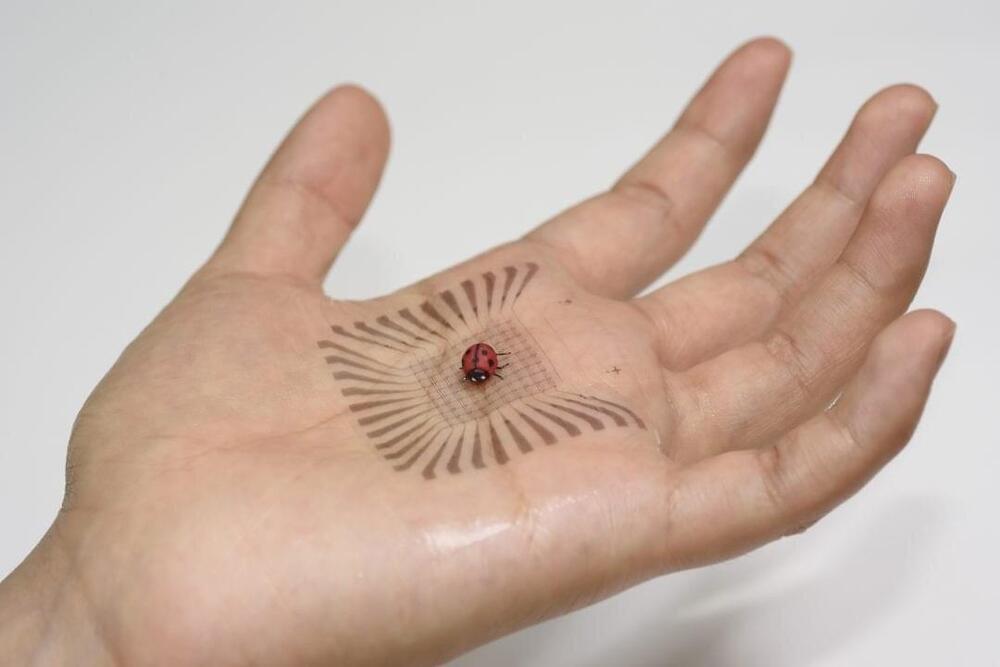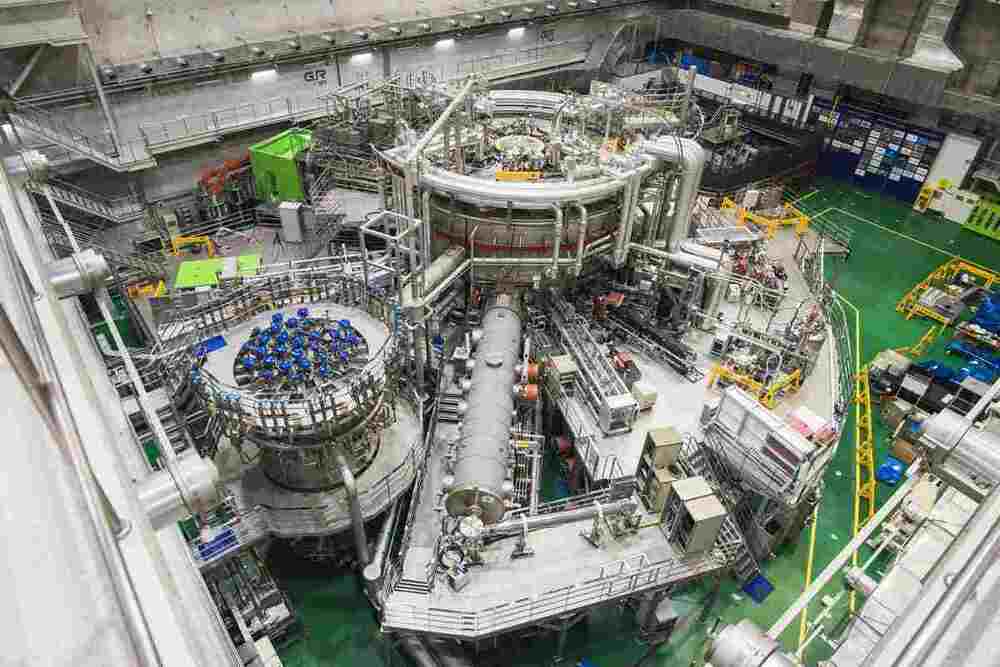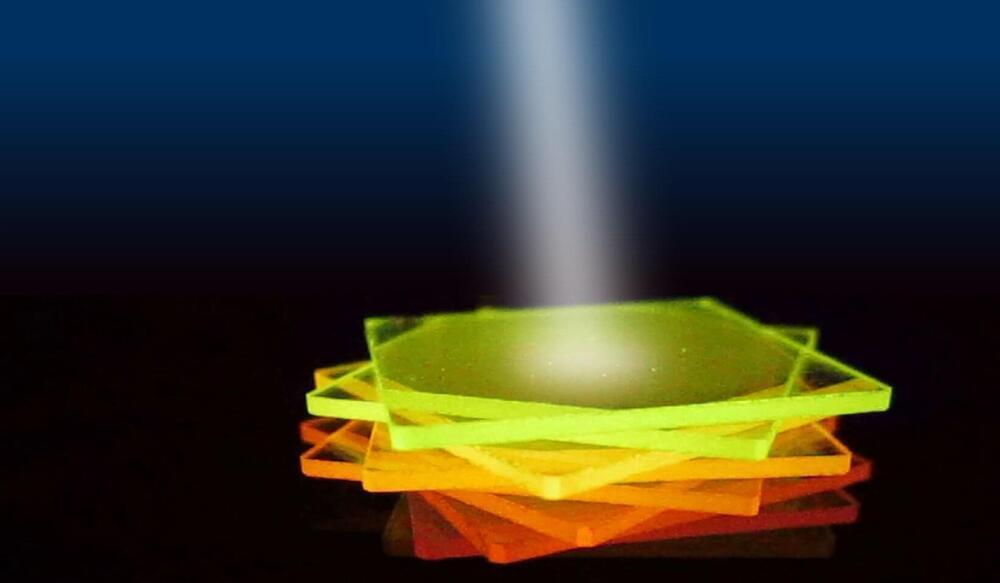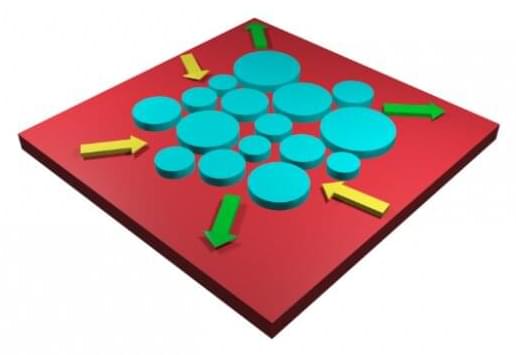Once-esoteric physics will underlie sensor revolutions in medicine, tech, and engineering.



Skin-like electronics could seamlessly integrate with the body for applications in health monitoring, medication therapy, implantable medical devices, and biological studies.
With the help of the Polsky Center for Entrepreneurship and Innovation, Sihong Wang, an assistant professor of molecular engineering at the University of Chicago’s Pritzker School of Molecular Engineering, has secured patents for the building blocks of these novel devices.
Drawing on innovation in the fields of semiconductor physics, solid mechanics, and energy sciences, this work includes the creation of stretchable polymer semiconductors and transistor arrays, which provide exceptional electrical performance, high semiconducting properties, and mechanical stretchability. Additionally, Wang has developed triboelectric nanogenerators as a new technology for harvesting energy from a user’s motion—and designed the associated energy storage process.

The Clemson Composites Center is developing new ways of 3D-printing low-cost manufacturing tools and is funding the research with $5.16 million from the U.S. Department of Energy’s Advanced Manufacturing Office and industry partners. Collaborators on the project include Honda Development & Manufacturing of America, Ohio State University and Additive Engineering Solutions, LLC.
The Clemson Composites Center is leading a new study that could help manufacturers save time and money while reducing their environmental impact– a project that adds to the center’s fast-growing portfolio of industry-guided automotive and advanced manufacturing research.
The team is developing new ways of 3D-printing low-cost manufacturing tools and is funding the research with $5.16 million from the U.S. Department of Energy’s Advanced Manufacturing Office and industry partners. Collaborators on the project include Honda Development & Manufacturing of America, Ohio State University and Additive Engineering Solutions, LLC.
The project will be based in the Clemson Composites Center’s cutting-edge facility in Greenville, South Carolina, placing it in the heart of a state where advanced manufacturing is a cornerstone of the economy.

A relatively new kind of semiconductor, layered atop a mirror-like structure, can mimic the way that leaves move energy from the sun over relatively long distances before using it to fuel chemical reactions. The approach may one day improve the efficiency of solar cells.
“Energy transport is one of the crucial steps for solar energy harvesting and conversion in solar cells,” said Bin Liu, a postdoctoral researcher in electrical and computer engineering and first author of the study in the journal Optica.
“We created a structure that can support hybrid light-matter mixture states, enabling efficient and exceptionally long-range energy transport.”
Did you know there’s a silent war going on inside your home? Alternating current (AC) electricity comes in from the grid, but many of your appliances and lighting run on direct current (DC). Every time you plug in a TV, computer or cell phone charger, power must be individually converted from AC to DC — a costly and inefficient process. Purdue University researchers have proposed a solution to the problem by retrofitting an entire house to run on its own efficient DC-powered nano-grid.
The project to transform a 1920s-era West Lafayette home into the DC Nanogrid House began in 2017 under the direction of Eckhard Groll, the William E. and Florence E. Perry Head of Mechanical Engineering, and member of Purdue’s Center for High Performance Buildings. “We wanted to take a normal house and completely retrofit it with DC appliances and DC architecture,” Groll said. “To my knowledge, no other existing project has pursued an experimental demonstration of energy consumption improvements using DC power in a residential setting as extensively as we have.”

In a recent publication in the journal Advanced Materials, a team of physicists and chemists from TU Dresden presents an organic thin-film sensor that describes a completely new way of identifying the wavelength of light and achieves a spectral resolution below one nanometer. As integrated components, the thin-film sensors could eliminate the need for external spectrometers in the future. A patent application has already been filed for the novel technology.
Spectroscopy comprises a group of experimental methods that decompose radiation according to a specific property, such as wavelength or mass. It is considered one of the most important analytical methods in research and industry. Spectrometers can determine colors (wavelengths) of light sources and are used as sensors in various applications, such as medicine, engineering, food industry and many more. Commercially available instruments are usually relatively large and very expensive. They are mostly based on the principle of the prism or grating: light is refracted and the wavelength is assigned according to the angle of refraction.
At the Institute for Applied Physics (IAP) and the Dresden Integrated Center for Applied Physics and Photonic Materials (IAPP) of the TU Dresden, such sensor components based on organic semiconductors have been researched for years. With the spin-offs Senorics and PRUUVE, two technologies have already been developed towards market maturity. Now, researchers at the IAP and IAPP, in cooperation with the Institute of Physical Chemistry, have developed a thin-film sensor that describes a completely new way of identifying the wavelength of light and, due to its small size and cost, has clear advantages over commercially available spectrometers.

He also announced plans to train ‘civilian sharpshooters.’
A Taiwanese tech tycoon plans to defend against a possible “Chinese invasion” by training three million “black bear warriors.” A retired Taiwanese tech tycoon said he plans to use his wealth to train these “civilian warriors,” according to a report published by Taiwan News.
“The Chinese Communist Party’s threat to Taiwan is growing, and the fight against (it) stands for freedom against slavery, democracy against authoritarianism, and civilized against barbaric,” said Robert Tsao, 75, who intends to use the US $33 million of his wealth to fund the “warriors.
Interesting Engineering is a cutting edge, leading community designed for all lovers of engineering, technology and science.

Linear analysis plays a central role in science and engineering. Even when dealing with nonlinear systems, understanding the linear response is often crucial for gaining insight into the underlying complex dynamics. In recent years, there has been a great interest in studying open systems that exchange energy with a surrounding reservoir. In particular, it has been demonstrated that open systems whose spectra exhibit non-Hermitian singularities called exceptional points can demonstrate a host of intriguing effects with potential applications in building new lasers and sensors.
At an exceptional point, two or modes become exactly identical. To better understand this, let us consider how drums produce sound. The membrane of the drum is fixed along its perimeter but free to vibrate in the middle.
As a result, the membrane can move in different ways, each of which is called a mode and exhibits a different sound frequency. When two different modes oscillate at the same frequency, they are called degenerate. Exceptional points are very peculiar degeneracies in the sense that not only the frequencies of the modes are identical but also the oscillations themselves. These points can exist only in open, non-Hermitian systems with no analog in closed, Hermitian systems.
